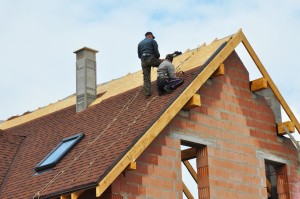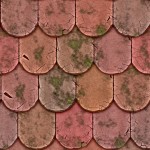 When considering a roof replacement in Vancouver, WA, there are typically three major reasons to replace your roof rather than attempt to repair it:
When considering a roof replacement in Vancouver, WA, there are typically three major reasons to replace your roof rather than attempt to repair it:
#1 When it approaches the end of its intended service life
#2 When there is extensive leaking
#3 When you want to enhance the curb appeal of your home
We wanted to get more specific though so you can know exactly what to look for when assessing the health of your roof. If you notice any of these issues, you’ll want to look into roof replacement:
Buckling and Curling Shingles
Shingles that are warped and have loose granules mean they are nearing or have passed their life expectancy. Before you groan at the idea of having to pay for an entirely new roof, know that you might have a defective roof, which may qualify you for reimbursement if it is under a manufacturer’s warranty.
Your Roof is Old
If the age of your roof is nearing 20 years, you can expect to have it replaced fairly soon. Additional factors that contribute to your roof aging include whether or not you have a single layer of shingles as well as how well your roof is ventilated.
When the roof vents or the roof overhang are not functioning well, you’re setting yourself up for problems. Moisture pockets can gather throughout your attic, ceilings, and other spots, which means mold and mildew could grow quickly. If you notice cracked gaskets, missing nails, or any damage to the vents on your roof, you will need to replace them quickly. Caulk or duct tape won’t do the trick here – a total roof replacement is needed.
Roof Valleys
The valleys on your roof are vital for the proper draining of rain and melting snow. If those valleys are damaged, you might experience leaks. While checking out your roof, be sure to examine the valleys for signs of deteriorating shingles, or ones that are damaged or missing entirely.
If you can see water damage, black stains, or mold spots developing on your walls, in your attic, or in other spots on the house, this could indicate that there is a problem with your roof that needs attention immediately.
Missing Shingles
Shingles can blow or fall off of your roof from strong winds, storms or just years of wear. Many shingles missing though is an indication that your roof is failing. If you notice missing shingles after a windstorm you might contact your insurance company for an evaluation prior to the new roof.
Bad gutters
It may not seem like a big deal, but if your gutters are backed up with water or debris, this can build up onto your roof and hold in excess moisture. Over time, this buildup can lead to damage to the shingles and the underlying material.
How much does a roof replacement cost in Vancouver, WA?
Nationally, the average cost of a new roof replacement and installation is about $8,000 – $15,000. Several things can make that cost fluctuate. These include:
 Roof size
Roof size
Pitch (steep roofs take a lot more effort and labor to complete)
Type of application (based on how the roofing material will be applied to your roof)
Materials used for your roof
Layers of material used
Code requirements for your roof
Location (for example, you may be charged more if it is difficult to get the labor and materials to your location)
Items on your roof (for example, if you have several chimneys, skylights, or other obstacles to work around)
As an example, if your roofer quotes you $18,000 with a national average of $8,000 – $15,000, it could be because you have a difficult roofline, the roofing products you need have a premium price, or there could be a significant addition of labor costs based on your roof line.
It is always good to get multiple quotes from roofing contractors when you’re researching. Keep in mind that the quotes between licensed roofing contractors shouldn’t vary more than $3,000 at the most.
If you choose to use a “handyman” who isn’t licensed, they may quote you significantly less to install your new roof, but it could also take longer and their warranty may not be on par with the licensed roofing contractor.
Other things to consider before replacing your roof
Shopping for a new roof isn’t like shopping for a new car. You can’t just trade it in after a year or two. It’s a big investment, and one you certainly don’t want to find yourself going through again in just a few years.
With the right considerations, you can be set for the next 20 years, maybe even 50-100 (depending on which material you go with). And, if you decide to sell the house, a high-quality roof will do wonders for the value. So as you look around, here are some extra items to consider:
#1. Timing Is Everything
Putting on a new roof can get loud. You should know that the work starts early in the morning and can last a day or two, sometimes a week depending on the job.
If anyone in the house isn’t well or is dealing with stress, you might want to wait a bit. Then again, if your problem is immediate (like a leak), you could always use earplugs.
#2. How Old Is Your Roof?
You don’t want to wait for problems to show themselves. It’s like waiting until your car breaks down to decide to change the oil. Most roofs last about 20 years, including asphalt and shingles. Metal and slate roofs last 50 years or more. Check if your roof is older than these timeframes. If so, it’s a good idea to replace it.
#3. Does It Really Need Replacing?
Instead of replacing the whole roof, contractors can add a second layer of asphalt shingles over the original one. This saves some money, as well as a mess. The downside is that the contractor can’t inspect the decking and flash underneath. You also miss an opportunity to install an ice and water shield, useful materials for living in a wet or icy climate.
#4. Deciding on Material
You might be surprised at the wide range of roofing materials available, much more than the standard composite or asphalt shingles. Metal roofs are gaining in popularity and can have a variety of looks. You can also choose from wood shakes, rubber for a faux slate look, copper, and real slate.
Do your research on durability, pros and cons and pricing for specific materials. This needs to be a thorough decision. Check with an experienced roofer to find out what he recommends for your situation.
#5. Consider Local Environmental Conditions
Local conditions have a significant influence on the material you choose. For example, if your area gets lots of sun, the material needs to resist deterioration from UV rays. If you get lots of snow and ice, you will need to be sure your gutter and downspout system are capable.
Research local factors that affect the type of roof material. When you speak with a roofing contractor, be sure to talk about weather conditions.
#6. The Importance of Ventilation and Insulation
Verify that the contractor understands your home’s need for proper ventilation. Ask them to identify the location of soffits, ridge vents, and louvers so you can ensure that they aren’t blocked by the roofing work.
This is also an ideal time to figure out if your attic insulation is adequate. It goes hand in hand with ventilation, which prevents heat and moisture buildup. This affects the whole infrastructure of your home.
#7. Ask Friend for References
It’s best to deal with an experienced contractor who has been doing business in the local community for many years. Word of mouth works best, so ask for references from friends, neighbors, and coworkers.
And, make sure your roofer is listed with the Better Business Bureau. This filters out the fly-by-night, cash-only roofing companies. It’s also helpful to read reviews on sites like Yelp, Google+ and Angie’s List.
#8. Check Documentation
Proper documentation is critical, especially for insurance and legal reasons. Make sure the roofer shows you proof of insurance and that he is licensed, bonded and insured. Check about manufacturer’s certification, which indicates a higher level of expertise and training. If your area requires a building permit, see that the contractor has one.
#9. Get a Written Estimate and Warranty
Beyond a written estimate, be sure to write down any verbal promises. Work with a contractor who offers a long-term guarantee, in writing. Most contractors will provide this.
And, most importantly, don’t base your decision strictly on price. You want reliability, not just affordability. A few extra dollars can save you plenty more in the future.
#10. Pay When You’re Happy with the Work
The standard upfront payment is usually 10% to one-third of the total cost. Always pay by check or credit card (never cash!). Before you pay the final installment, check the work thoroughly.
One more note: after a new roof, you can have thousands of nails scattered around. Before you finish paying, ask the contractor to use his device to clean up the area (if he doesn’t offer to do so already). Most reliable roofers will have an industrial-size magnet on wheels that scoops everything right up.
Roof replacement: One job that you cannot “DIY”
Roof replacement should always be completed by an experienced roofing professional. Improper roof replacements can lead to leaking and expensive water damage – not only to the underlayer of the roof but to the inside of your home as well.
In addition, roofing work has other risks that can be hazardous. Electrical wiring could be bumped and cause injury or death, and depending on the angle and height of the roof, a simple misstep is all it takes to send you over the edge.
If you need to have a roof replacement or repair, our experienced team is happy to take a look at the roof and provide you with an estimate.
Contact us at Warner Roofing & Construction Inc to hear what is needed and how quickly it can be completed. The longer you wait to get it repaired or replaced, the more potential you have for extensive damage to occur.







